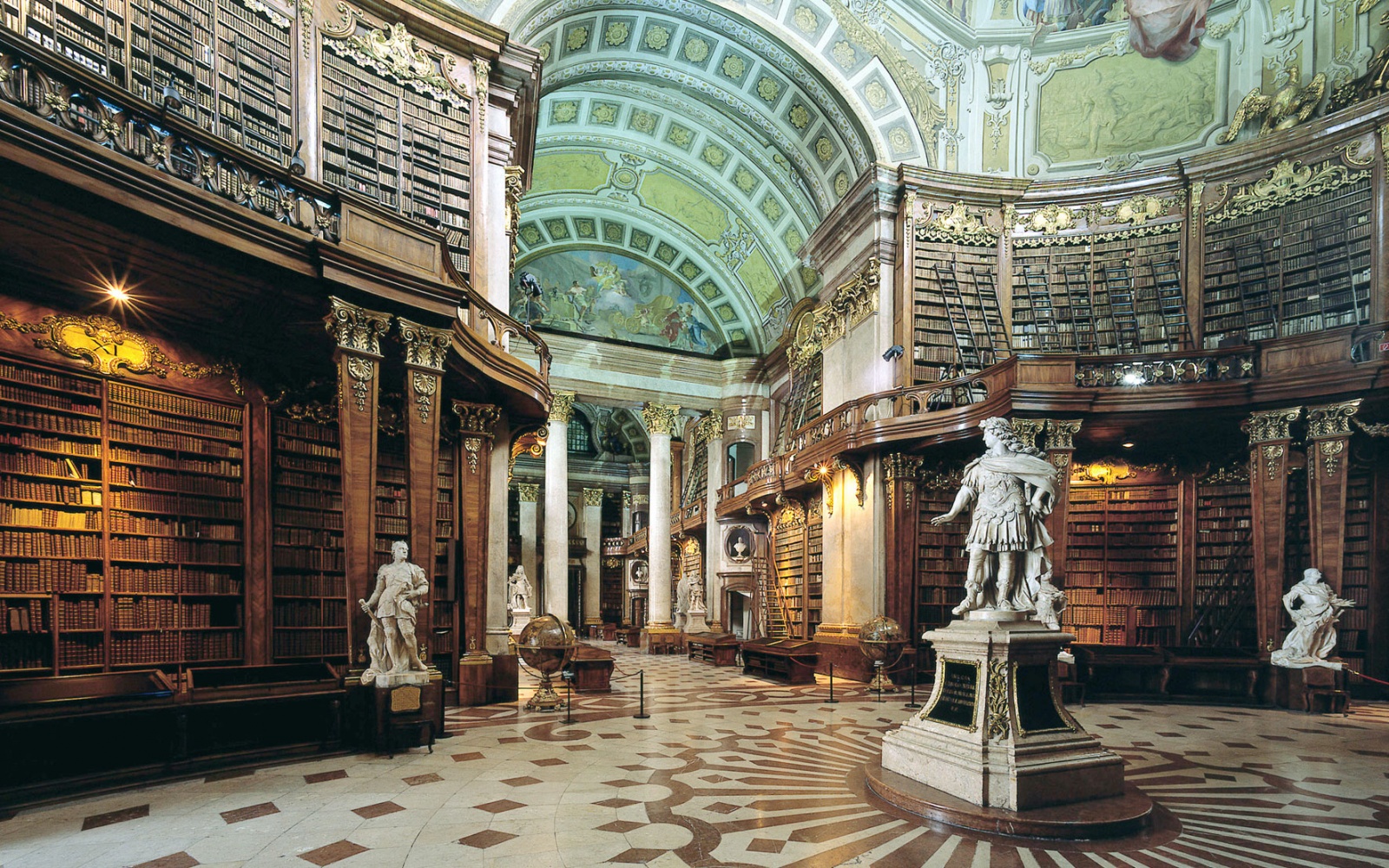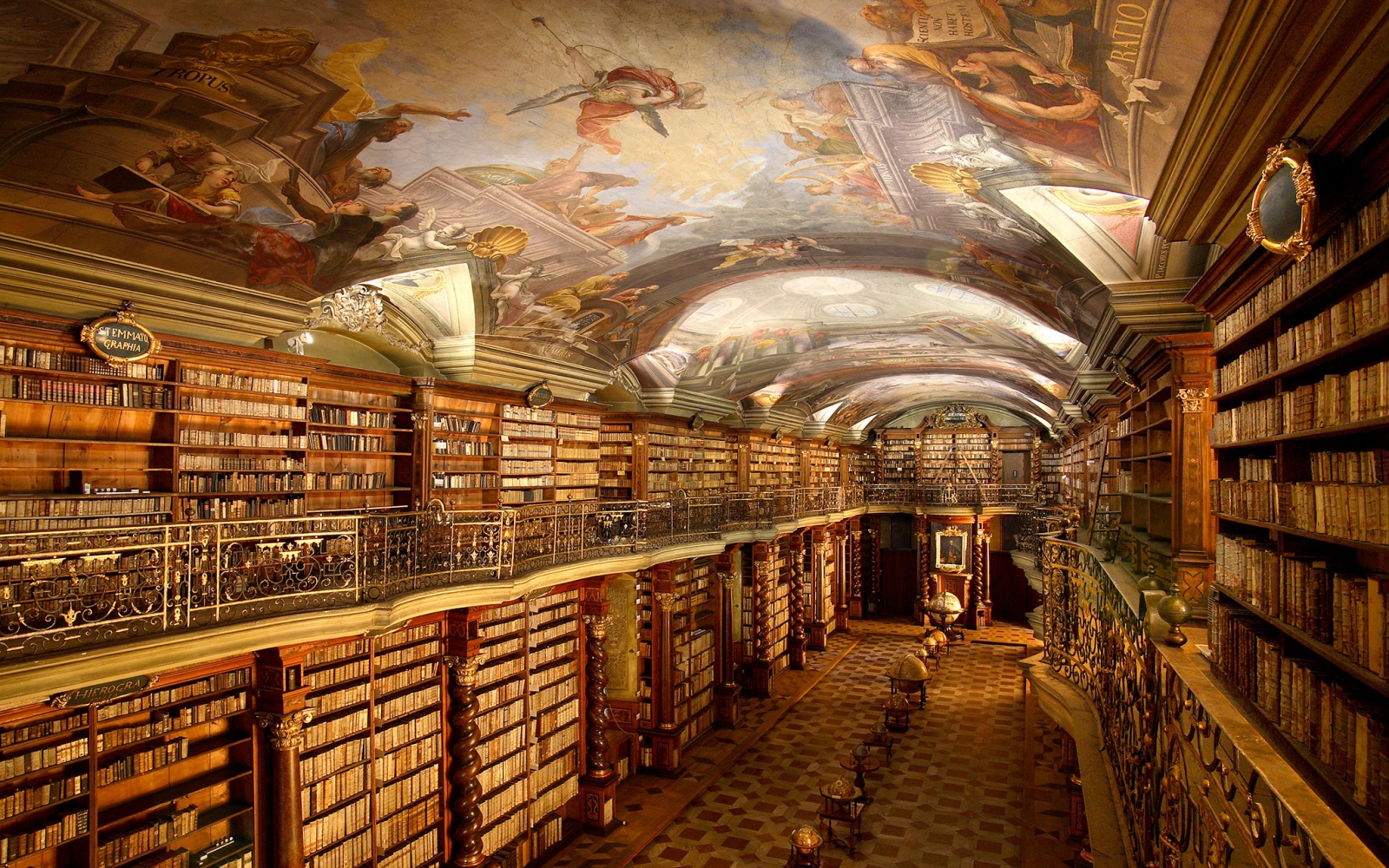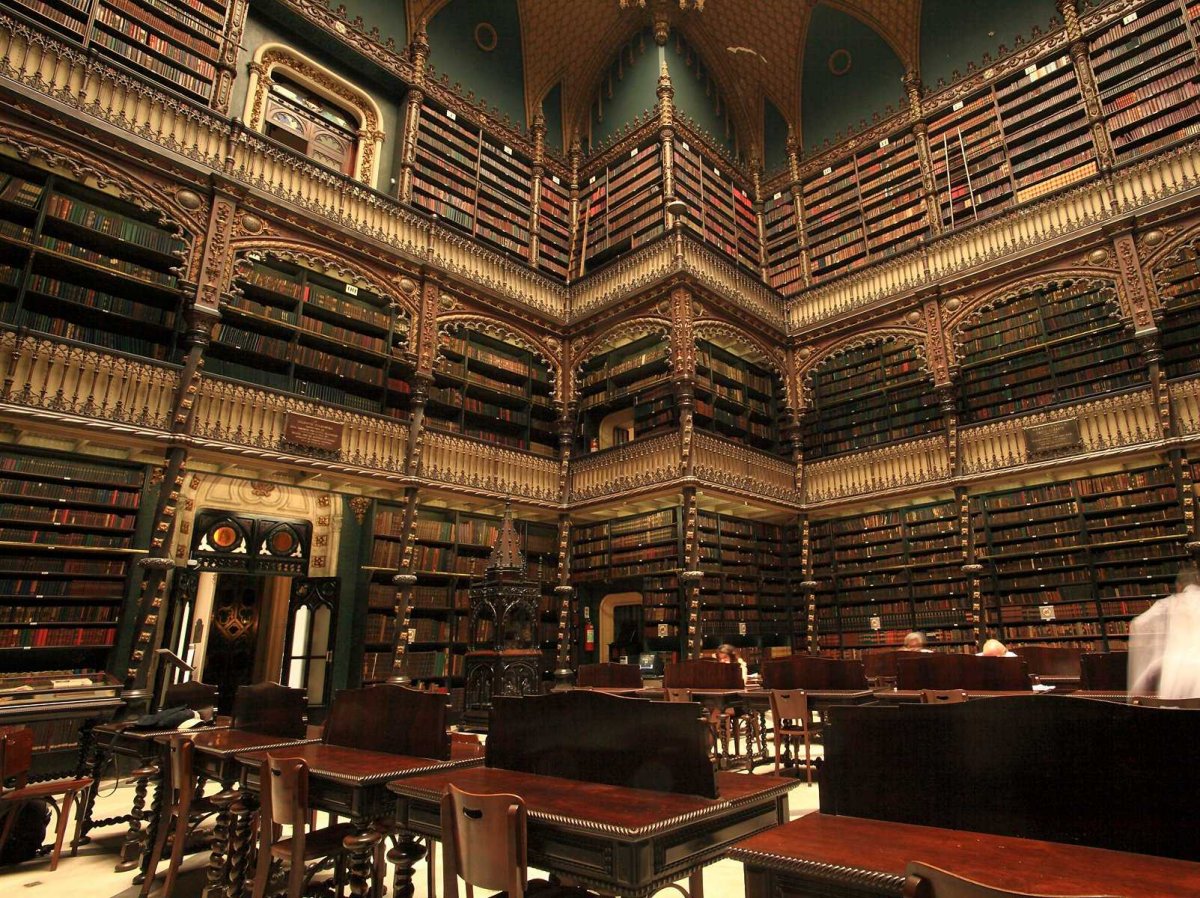Chronopaths: Feelings in Libraries #2
 Sunday, December 3, 2017 at 02:40PM
Sunday, December 3, 2017 at 02:40PM In Different Libraries, in Different Eras
Different libraries can clearly evoke in us very different feelings. It can be fascinating when looking at pictures of various historical libraries to imagine the feeling of being in them. I have been in some of these and others like them, and I know how different they feel from modern libraries or even those from the 19th century.

For the fullest sense of contrast, compare the libraries in my previous post with this one in Vienna. This is library as palace. It is a testament to the political power and wealth of a ruling dynasty in the age of European grandeur. As you walk through the space of this library you feel as much impressed by the marble floors, the classical sculptures, and the ornately sculpted and painted ceilings as by the books. You feel what you are meant to feel: the nobility and grandeur, the wealth and power of those who collected and owned these books.
If you focus on the books almost as an afterthought, you will see that they are recessed and although partly illuminated, hardly touchable or ready to hand. Each one bound in leather, each one asking to be treated as much as an object of value as a source of knowledge. This does not feel -- at least I think to the modern observer -- as a comfortable place to commune with books, to reach out and touch them, to casually open them to explore.

Somewhat similar but less Imperial, this library in Prague, part of the same Habsburg tradition and culture, is a little bit more like a church than a palace. The books are more out front and they more completely define the scene and the experience compared to the library in Vienna.
The light feels gentler, the floor softer, the atmosphere more contemplative than Imperial. The mood and feeling has shifted considerably. I can also imagine that the quality of sound is different, changed from the sharp echoing of marble to the softer acoustics of wood. The feeling here is quieter, calmer, more accepting of the visitor and less alienating, so that we feel not so much impressed as inspired.

In the Royal Portuguese Library another element has been added, the work desks for library patrons and scholars. This clearly is meant to be a room for reading and thinking, perhaps for writing notes and copying out passages from books.
It still sets out to impress and it still uses the books as a feature of architectural decoration, much as if they were wallpaper. But it does so in a beautifully aesthetic way that creates a soft calming feeling conducive to the quiet contemplation of a Reading Room. The feeling here is of a serious place for serious work and it is harder to imagine casually and playfully exploring its treasures.

Finally, here is the library of Trinity College in Dublin, built in the classic tradition of Oxford and Cambridge: a gentleman's library, a testament not to an Imperial Dynasty so much as to a lineage of scholars and a succession of professors, an aristocracy of the Academy closely allied with the real aristocracy that probably paid for the library to be built.
From the feeling of quiet and contemplation, of a serious place for serious work, we have moved on to a sort of Church of Learning. The busts of scholars and professors might well be those of saints, the Romanesque arches and the long nave could belong to a cathedral. The feeling here is that this is a testament to order and organization, everything and everyone in its proper place.
The richness of the wood and the binding of the books still evokes a feeling of being at home in a place made from the forest but shaped to human purposes. People feel comfortable with wood, we instinctively feel the majesty of trees and forests, and here wood dominates over stone and the feelings of wood contrast with those of stone and marble. Compare the feeling you imagine you would have in this library space with that of the imperial library in Vienna.
How do we feel in each of these spaces? And why do we feel as we do?

Reader Comments